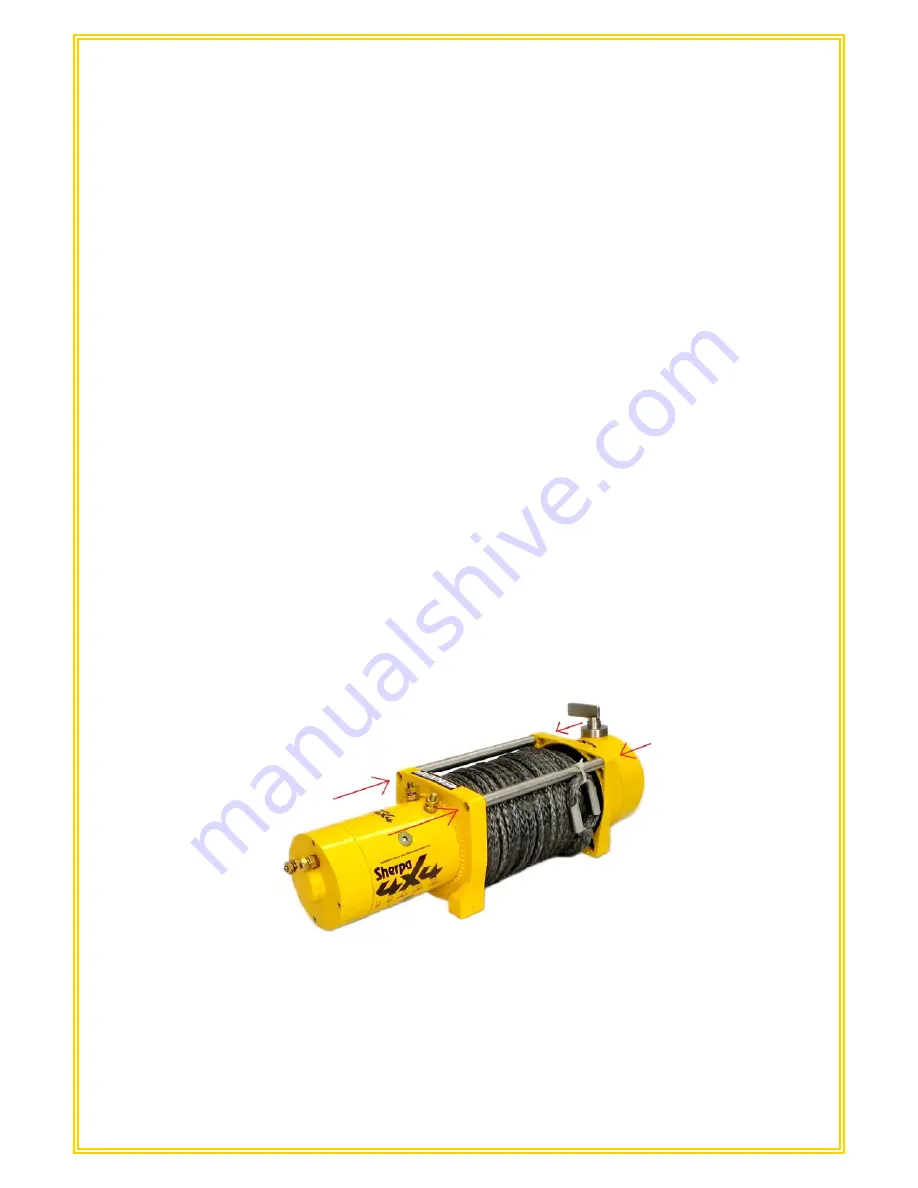
Copyright (C) Sherpa 4x4 | www.sherpa4x4.com.au | [email protected]
6
WINCH INSTALLATION
Mounting Your Winch
The winch is to be mounted into a suitable steel mounting frame using the 4 point foot
mounting system in either a horizontal or vertical plane. Your winch should only ever be
installed with the rope/cable winding onto the drum on the lower side, closest to the
mounting bolts. Your winch is not designed or rated for the rope/cable winding onto the top
of the drum near the cross member supports.
Ensure your winch rope or cable is wrapping onto the drum as per the arrow stickers on your
winch. Typically, when looking at the vehicle front on, the winch motor will be installed on the
left hand side of the vehicle. Installing your winch backwards will result in the winch brake
failing to work.
It is very important that the winch is mounted on a flat surface so that the three sections
(motor, cable drum and gear housing) are properly aligned. Before commencing installation,
ensure the mounting facility being used is capable of withstanding the winches maximum
rated capacity. The fitment of winches and / or a frontal protection systems may affect the
triggering of SRS air bags. Check that the mounting system has been tested and approved
for winch fitment in air bag equipped vehicles.
The winch should be secured to the mounting plate with the steel bolts and spring washers
provided. The fairlead or hawse is to be mounted so as to guide the rope/cable onto the
drum evenly.
Your winch tie rod bolts may be loose from transport. These bolts should only be removed
one at a time so your winch holds together. Apply a drop of thread locker to each bolt and
tighten.
Winches are mounted in a high vibration environment. It is highly recommended both liquid
thread locker and spring washers are used on all connections. All connections should be
checked for tightness after 1,000km of travel.







































